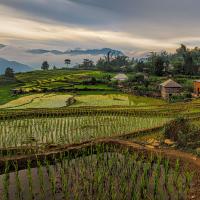Toxic Byproducts of Agent Orange Continue to Pollute Vietnam Environment

- 2019-03-14
- Science Daily
During the Vietnam War, United States aircraft sprayed more than 20 million gallons of herbicides, including dioxin-contaminated Agent Orange, on the country's rain forests, wetlands, and croplands. A new article documents the environmental legacy of Agent Orange in Vietnam, including hotspots where dioxin continues to enter the food supply.
Olson and co-author Lois Wright Morton of Iowa State University explain that Agent Orange was a combination of two herbicides, 2,4-D and 2,4,5-T, neither of which persist longer than a few days or weeks in the environment when exposed to sunlight. However, during production of Agent Orange, a toxic byproduct formed: dioxin TCDD, the most toxic of the dioxin family of chemicals.
The article maps the 10 airbase sites where dioxin TCDD levels remain at dangerous levels, noting that millions of Vietnamese live in adjacent cities and villages.